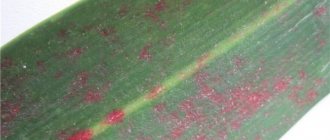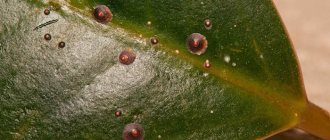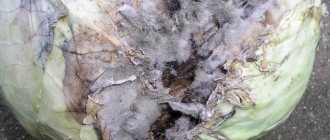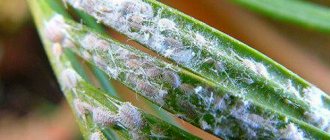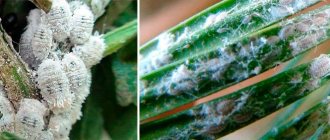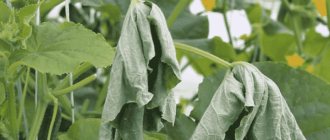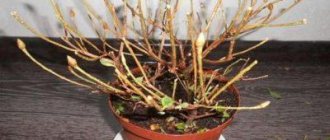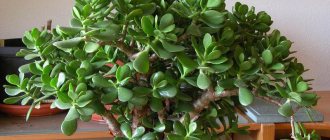For inexperienced flower growers who decide to grow exotic plants at home, sometimes they simply give up due to excessive care associated with ignorance of the biological and physiological characteristics of orchids if The orchid begins to rot before our eyes.
it is difficult and problematic to grow such a plant at home
It turns out that everything is not so difficult if you try to understand the causes of decay and know what to do to revive the tropical beauty.
Orchids, although capricious to care for, are quite life-loving and can almost always be resuscitated.
Why does orchid rot?
Putrefactive processes in any part of the plant are mainly associated with increased and prolonged humidity at low ambient temperatures . This is especially true for inexperienced flower growers.
Having no experience, not knowing the physiological characteristics of tropical orchids, they care for their pets too hard, not realizing that they are only harming the plant.
Causes
The main reasons why an orchid rots when grown at home are:
- excessive watering;
- poor quality soil;
- Greenhouse effect;
- sunburn;
- hypothermia;
- organic fertilizers;
- excess fertilizer;
- weakened plant;
- pests
Often the cause of rotting is excessive watering.
Which plant organs are under attack?
The most vulnerable part to putrefactive processes is the root system . Overwatering causes the soil to become compacted and decompose, and in the absence of good ventilation, rapidly spreading pockets of rot are formed.
Second place belongs to the leaves of the plant . Damage by direct rays of the sun or pests opens the flow of air into the intercellular tissues, where the process of decay begins.
The third place belongs to the pith or stem . Inaccurate watering, irrigation or pests quickly lead this part to the center of the spread of the fungus.
Types of rot
Gray
A fungal disease caused by the fungus Botrytis cinerea. Ideal conditions for formation are a cold, damp atmosphere with poor air ventilation . Initial appearance on flowers in the form of small brown spots .
As the spots progress, they enlarge and are framed by a pale pink halo . The final phase of spread is the merging of the spots into one and the appearance of gray membranous sprouts (mycelium) of the fungus.
Gray rot on orchids (photo of the back of the affected leaf).
Gray rot on the petals.
Under ideal conditions, an infected plant is capable of releasing spores into the environment. At temperatures from 18 to 23 ° C and humidity of at least 90%, the spread of infection to healthy tissue occurs quite quickly - within 12-15 hours. The most susceptible to the fungus are Phalaenopsis and Cattleya.
Attention! In 90% of cases, a weakened plant is affected.
Brown or bacterial rot
The causative agents are bacteria of the Erwinia, Pseudomonas and others families. Young leaves and shoots are most often affected . Lesions appear as wet brown spots that cover the entire area of the plant before our eyes. If a stem or growing point is affected by brown rot, it dies.
The action of bacteria progresses if the humidity is above 60% and the ambient temperature is 15° and below.
Susceptible to this type of rot:
- Phalaenopsis;
- Cattleya;
- Cymbidium;
- Paphiopedilum.
Bacterial rot.
Another photo of the bakt. rotten.
If the damage is severe, the plants are destroyed. Local, small lesions are cut down to living tissue, and the section is disinfected with crushed activated carbon. Conditions and care are improving.
For preventive purposes, under favorable conditions for the spread of bacteria, spraying is carried out with preparations based on copper.
Black
The causative agents of this fungal disease are soil-dwelling Pitium fungi, which lead a parasitic lifestyle.
And although the main damage occurs to young roots, since they are not yet protected by a reliable coating, when it spreads, it affects all parts of the exotic plant, regardless of age.
The greatest danger is the formation of foci of rot on the root system and at the bases of tuberidia. The danger lies in the rapid spread of lesions to healthy areas. The roots quickly turn black due to tissue necrosis, and the tuberidia become mummified.
The conditions for the spread of black rot are low temperature and high humidity of the environment and soil . Under such conditions, the underground part develops slowly. Some roots do not have enough air in the moisture-saturated soil, and they gradually die off, which makes it easy for pathogenic fungi to penetrate them.
The most accessible black rot are the following types of orchids:
- Cattleyas;
- stangopei;
- laelia;
- leliocattleya;
- paphiopedilum, etc.
Even at normal temperature and humidity, mushrooms do not die . The spread processes slow down and proceed much more slowly. Extensive activation of putrefactive processes leads to the death of the tropical beauty.
Black rot.
You can save the plant in the initial stages of damage . Since development occurs in patches, optimizing moisture and treating with copper-containing preparations will not only significantly slow down the process, but in the early stages can cure ocher.
Dry rot
On orchids, according to some sources, dry rot is nothing more than fusarium. But there is another concept of dry rot - this is southern sclerotial rot.
Southern sclerotial
An infectious disease caused by the fungus Sclerotium rolfsii. It appears on almost all parts , but especially on the roots and stem, and at the same time.
Soil-dwelling fungi that can remain viable for many years. The infection occurs not only with low-quality soil components, but also with irrigation water.
Ideal conditions for propagation are considered to be a temperature of 27-33° C and high humidity.
Southern sclerotial rot.
More photos.
Important! At low humidity, the disease multiplies just as quickly, differing only in a different development process.
If wet rot is in many ways similar to various types of root rot, then dry rot mainly affects orchids growing on blocks.
Fusarium
A fungal disease caused by the fungus Fusarium moniliforme var. Lactis. Spotting on yellowed leaves and their curling is the main symptom of fusarium. The tissues of the leaf blade lose their structure, soften and become covered with a whitish-pink coating formed by fungal spores.
The orchid quickly takes on a dull gray appearance. The central shoot rots and subsequently dies.
Fusarium.
Fighting the disease is quite difficult and takes a long time. For 7-10 days, it is subject to treatment with the drug foundationazol several times a day .
Causes of leaf rotting
There are a number of factors that lead to home flower diseases. The most common mistakes made by gardeners when caring for a capricious plant. Rot appears due to:
- improper watering;
- low temperature and high air humidity;
- incorrect choice of fertilizers;
- poor lighting;
- dense soil;
- infection with fungal infections.
The cause is often mechanical damage to parts of the flower. If it is dropped or accidentally injured without timely first aid, this leads to rotting of the orchid’s stem or leaf plate, so in case of any damage, problem areas are treated with antiseptic compounds.
Causes of home flower disease
Fungal and bacterial infections
The most common orchid diseases, infection of which leads to flower rot, are wet, gray and brown bacterial rot, as well as fusarium. All these diseases are characterized by the appearance of pronounced spotting and active growth of spots on healthy tissues.
The fight against all these diseases is based on removing parts of the flower damaged by rot and treating it with fungicides. To avoid infection with diseases of other house flowers, the orchid should be quarantined.
Using unsuitable fertilizers
Some gardeners use complex mineral compositions to feed orchids. This cannot be done: such fertilizers contain a large amount of nitrogen, which negatively affects the flower’s immunity.
Only specialized compounds for fertilizing orchids are used, and fertilization is carried out according to the instructions.
Excess moisture
The basic rule for watering orchids is to moisten the soil, which is done if the substrate is completely dry. Excessive watering creates pathological conditions for flower root rot.
They also pay attention to temperature, water quality and air humidity. It should be settled and not cold. If air humidity is high, spraying should be abandoned. The flower will have enough moisture in the soil.
Dense soil
Wrong choice of soil also leads to flower rotting. If it is heavy and dense, it may be difficult to ventilate the roots. Another reason is the loss of excess moisture into the pan.
Wrong choice of soil also leads to flower rotting
To restore an orchid grown in dense soil, the plant is transplanted into a specialized lightweight granule of zeolite or tree bark, as a result the plant comes to life.
Lighting and temperature
For the development of fungal infections, the ideal conditions are the absence of sunlight and coolness. Take care of natural light, for which the orchid pot is placed on the windowsill. On cloudy days they use a phytolamp.
Favorable temperature for growing orchids is 18°C-24°C. Any deviation from the norm will have a negative impact on the flower.
Course of the disease
Different species of orchids are affected by pathogenic fungi and parasites in different ways and under different conditions. Also, the clinical picture looks different.
Pathogenic fungi enter plant tissue due to the presence of certain enzymes. Having penetrated inside, toxins are released, which provoke the formation of rot that decomposes the fabric.
Any, even minor, damage to the roots, leaves or stem allows air to enter the wound and, accordingly, the development of pathogens. Oversaturation with moisture leads to tissue destruction, which is the main culprit in the development of fungal diseases.
Fungal diseases of orchids: treatment and prevention
Late blight, cercospora blight, rhizoctonia blight are fungal infections that affect tropical orchids in the middle zone. Few flower growers are able to devote a lot of time to create for Tropicans the conditions to which they are accustomed in their natural environment. All of them are extremely beautiful, but capricious and demanding to care for.
Rhizoctonia or brown rot , causes rotting of the flower core, starts from the roots - usually white, they turn brown, covered with mucus. Wet areas appear on the leaves, surrounded by a yellow edging.
Cercospora blight is similar to anthracnose - it manifests itself differently on different varieties of orchids. Usually dark spots appear that quickly turn yellow. If there are a lot of them, the leaf quickly dies. It is important to notice the appearance of spotting in time, isolate the plant and spray it with antifungal drugs. Every orchid grower should always have a bottle of fungicide on hand.
Late blight is characterized by the appearance of weeping areas on leaves or roots. At the same time, the roots become fragile and are easy to crush. Such areas must be removed to healthy tissue, if any remains, treated with fungicides and replanted in a new pot and soil. In advanced cases, it is better to destroy the flower.
It should be borne in mind that pruning is carried out with 1.5 cm of healthy tissue, but even there may already be pathogens, so all sections are treated with brilliant green.
Carefully ! Under favorable conditions, late blight of orchids develops rapidly, so postponing treatment measures for more than 1 day is not recommended - you may not have time to save the plant.
Terms of distribution
Fungal diseases, caused by various types of fungi, develop and spread under certain conditions . But, basically, the conditions are related to temperature, humidity and lighting.
Some types of fungi, such as Phytophtora cactorum, require high humidity and temperature, while others require dry air and low temperature.
Therefore, it is advisable for flower growers to know the physiological and biological characteristics and characteristics of the type of orchids grown at home.
It is proper care, the creation of the necessary conditions, the absence of “excessive” care and the implementation of the recommendations of experienced orchids that will ensure the health of exotic beauties.
External signs of damage
Rot is the process of decomposition or destruction of intercellular substances, tissue cell walls and the entire contents of a plant cell. Such pathological processes are caused by semi-parasitic and saprophytic fungi or bacteria. The process of tissue breakdown into cells occurs, which weaken and cease to function, as a result of which the work of tissues and organs stops.
External signs of putrefactive processes, both aboveground and underground, may differ depending on the type of fungus, but, one way or another, they form initial, local foci of damage:
- the appearance on young leaves and shoots of watery light brown spots, quickly darkening and increasing in size until merging into one continuous spot;
- brown and black spots covered with a terry gray coating;
- dark brown shades on roots and leaves;
- yellowness, darkening, the appearance of oozing ulcers on the leaf blades;
- brown spots on flowers;
- blackening of the root system.
Blackening of the roots may be a sign of rotting.
Attention! Bacterial infections occur much less frequently than fungal infections. If pathogenic fungi attack under certain conditions and in weakened places, then bacteria attack when the plant is completely weakened.
Consequences
A rotten orchid very quickly loses its immunity and weakens . A weak plant is unable to resist the disease, and leaves with areas of rotting cease to participate in photosynthesis. When the roots become putrefactive, the above-ground part stops receiving nutrition and gradually dries out. Small local outbreaks do not pose a threat if they are eliminated in a timely manner.
General state:
- oppression and weakness of the orchi;
- loss of turgor in the leaf apparatus;
- reduction or loss of plant decorativeness;
- reduction in flowering duration;
- inhibition of photosynthesis processes;
- slowness or complete stop in growth and development.
The main signs, one way or another, are associated with the appearance of any spots on the leaves, stems or flowers. The florist should be concerned about their appearance and find out the reason . Otherwise, pathogenic fungi or bacteria will cover not only the plant itself, but also those adjacent to it.
With root rot, the above-ground part can remain seemingly quite healthy for a long time. But the process of rotting of the root part will make itself felt over time. The consequences can be quite dire. If timely measures are not taken, the plant will die quite quickly.
What to do and how to save an orchid if it is rotting:
Here we will take a closer look at what to do if the orchid is rotten. It should be borne in mind that rescue measures will vary depending on the affected plant organ.
Trunk?
If an orchid's trunk rots, this is one of the most dangerous processes for its life . If the outbreak is too large and has captured most of it, then it is almost impossible to save such an orhu.
If a large area of the trunk rots, the orchid cannot be saved.
There can be many reasons for trunk damage , ranging from frostbite to mechanical damage. Black spots may appear on the trunk or it may begin to turn yellow. It all depends on the cause and type of disease.
In any case, timely detection of a defect on the stem increases the chances of saving the tropical beauty by an order of magnitude.
Standard resuscitation methods:
- removal of foci of rotting to healthy tissue;
- processing of sections;
- transplantation and special care.
Monopodial orchids have one short trunk, on which all the important parts of the plant are located: roots, leaves and growing point. For this reason, it should be given increased attention. Therefore, if an orchid rots at the base, this is a very alarming sign.
Core?
Rotting of the core (growing point) is a rather rare but common phenomenon. This usually occurs as a result of some kind of infection, rather than from the process of rotting caused by stagnation of water. For the core to rot, water must remain there for at least a day.
In an apartment (it’s hot in summer and heating in winter), this is almost impossible; it will simply evaporate. But, if a tropical monopodial beauty stands under the sun's rays, then the sun can burn the tissue or quickly evaporate moisture, which will lead to a sharp cooling of young leaves.
Such a sharp drop is similar to frostbite, as a result of which the young leaf plate becomes damaged and, accordingly, open access to pathogenic microorganisms.
A completely different picture is observed in the autumn-winter period, when the heating is not yet working and the room is cool. Water cannot evaporate for a long time; it stagnates. Tissue destruction depends on the condition and tenderness of the leaf blades of young leaves. The more tender they are, the faster the destruction of their tissues will begin.
First of all, it is necessary to strictly follow the rules of plant care and hygiene.
Preventive actions are based on the following requirements:
- lighting, temperature and humidity are three parameters that determine location;
- watering is carried out only when the substrate is completely dry;
- regular ventilation ;
- removing water accumulated after watering from the core using a paper napkin for 30-40 minutes.
To avoid rot, always remove water from the leaf axils.
To avoid the spread of rot deep into the trunk and onto adjacent leaves, the source of damage is cut out to an area of healthy tissue . And the cut areas are disinfected and dried. During the first few days, you need to monitor the cutting sites. The appearance of new signs indicates that the cut size is insufficient.
Important! If the core is completely rotten, then you should not be afraid of cutting it out completely. Without it, the orchid can be revived. If the putrefactive process spreads throughout the ocher, there will be nothing to reanimate.
The top?
Why does the top of the orchi suffer and rot? There are two main reasons: infection or errors in care.
If any rot affects the top, it must be cut off . The cut site is cleaned, treated with a fungicide or disinfected.
Further care for the remaining stump is standard, as for a regular orchid, with the exception of spraying and additional nutrition. With proper care, a baby will emerge from this stump in 50-60 days. The active growth of the baby allows feeding with a balanced diet.
Growth point?
No matter how resilient an orchid is famous, if the growing point rots, the chances of saving it are estimated by experienced orchidists to be 50 to 50.
It is important to prevent infection from spreading throughout the entire stem and root part.
Even in the absence of a growth point, a monopodial orchid will be able to live, since it will be able to reproduce with the help of children.
Bulba?
Rot in any part of the plant should alert the gardener. Bulba is no exception. Rotting of the base of the bulb is especially dangerous, since the infection spreads quite quickly and can cause damage to the root system. Then only a miracle can save the exotic.
The rescue process is standard - “surgical” intervention. The putrefactive focus (or the entire bulb) is removed down to living tissue , disinfected, dried, and watering and fertilizing are stopped for a while.
Popular questions when growing orchids
The process of growing an orchid is long. During the growth of a flower, you may encounter problematic situations that are important for the normal development of the plant.
Why do orchid flowers wither? The most common reason is creating an unsuitable climate for the plant. The buds may be exposed to direct sunlight. The plant gets tissue burns.
Low temperatures also cause flowers to wilt. To normalize, it is necessary to increase the temperature in the room and provide ventilation.
How to revive an orchid if the roots have rotted? Root rot is dangerous because it damages the area that allows for the absorption of liquid and beneficial microelements. If the rhizome of the plant is partially rotten, then cut out all the affected areas to healthy tissue and treat with 3% copper sulfate.
If the orchid root has rotted completely, the entire suspicious infected part of the plant is cut out. The cut site is treated with a fungicide or a weak solution of potassium permanganate. After this, the orchid without roots is placed in a greenhouse with an optimal climate for it so that the process of formation of new roots begins.
You can also grow orchid roots in water. To do this, the treated part of the plant is placed in a vessel with boiled water so that only the lower part of the orchid is in the water, without touching the leaves. At night, the plant is taken out of the water and dried. Adding sugar to the water will help speed up root formation.
Reanimation of an orchid without roots in water
The orchid's leaves are withering: what to do? If the process is associated with unsuitable climatic conditions, it is necessary to adjust the humidity and temperature in the room. You need to stop feeding for a while.
Wilting of foliage may be associated with the effects of viruses on the plant. In this case, it is recommended to get rid of completely wilted leaves by treating the sections with activated carbon.
How to save an orchid without roots? You can revive an orchid without roots by growing a new rhizome. The process requires medications that can be purchased in special stores.
Before resuscitation begins, it is necessary to prepare the plant. To do this, rotten sections of the rhizome are removed in advance, after which the orchid is dried for 8 hours. A drug (Kornevin) is applied to the cut sites and the neck of the orchid.
An activated carbon tablet is dissolved in 0.2 liters of clean water. The orchid is placed in a container and kept in a warm place until new roots appear. Once the rhizome has formed, the plant can be planted in the substrate.
The orchid does not bloom: what to do? First you need to create favorable conditions for the plant to bloom: reconsider the location of the orchid and the amount of watering. Excess and lack of light affects the appearance of buds in the plant.
If the root system is exposed to fungus, then the flowering process will not occur. It is recommended to replant the plant by first removing the affected areas of the rhizome and treating it with activated carbon.
White plaque on orchids: how to treat? To get rid of white plaque, you need to disinfect the surface of the leaves with a soap solution. Treat the soil with Fitoverm or similar products.
The orchid has dropped all its leaves: what to do? The reasons for the sudden loss of foliage are insufficient or excessive watering, high temperature, the negative impact of fertilizing and damage to the rhizome. It is necessary to check the substrate and roots of the plant. If there are signs of rotting, then you need to cut out the diseased areas and replant the orchid.
Why does an orchid shed its buds? The shedding of buds by an orchid is associated with a stressful state. Most likely the problem lies in an adverse effect on the plant from the external environment (bacteria, viruses, etc.) or a sudden change in the location of the flower.
The peduncle of an orchid has dried up: what to do? In a healthy flower, the peduncle dries up after the orchid has bloomed. It is necessary to remove the peduncle after it has completely dried out to allow a new one to develop. If the process is not associated with the natural growth of the plant, then it is recommended to reconsider the rules for watering the orchid.
Why do orchid leaves crack? Cracks on the leaves are one of the signs of deformation. One of the reasons is excessive use of fertilizers and excessive or insufficient watering. Possible mechanical impact on the plant: careless transportation, etc.
The roots of an orchid are rotting: what to do? When roots rot, it is necessary to determine the cause (most often - a large amount of moisture). Reduce the volume of infused liquid, you can soak the rhizome, first eliminating the infected areas.
Why do the tips of the orchid's leaves turn black? Blackening is associated with leaf scorch. The plant requires diffused light; direct rays are destructive. During restoration, it is recommended to limit the supply of nitrogen fertilizers.
The orchid has wrinkled leaves: what to do? If the process is not associated with the natural aging of the plant, then infection of the root system with a fungal disease is possible. It is necessary to determine the type of disease, then remove and treat the diseased roots with special preparations. The orchid may need resuscitation if the root is completely infected.
Orchid leaves are rotting: what to do? It is necessary to cut out rotting places and first review the microclimate of the room. Treat sections with activated carbon or fungicide and carry out preventive measures. Rot is easily transmitted through water droplets, so it is recommended to check neighboring flowers.
An orchid is a rather capricious plant. But it can be easily dealt with if you know how to properly treat the roots and leaves of the plant. It is also important to maintain a normal indoor climate.
Drugs for treatment
In this section we will look at how to treat an orchid from rot.
Fitosporin
The basis of microbiological Fitosporin, effective in the fight against fungi and bacteria, is the natural bacterial culture of Bacillus subtilis. Systemic work, the ability to spread through blood vessels, allows it to successfully suppress infectious agents.
The effectiveness against a wide range of fungal and bacterial diseases is caused by the presence of humate in the composition of various fillers and OD, which enhances the fungicidal effects and stabilizes the characteristics for a long time. Due to these characteristics, the shelf life is about 2 years, and shelf life is not limited.
Fitosporin.
The main use of Fitosporin is preventive treatment . For diseases in a serious stage it is ineffective.
The use and administration of the drug is carried out strictly according to the instructions . In orchids it is used to treat the soil and root part before planting.
Has a low danger rating and does not pose a threat . Upon contact, it sometimes causes irritation to the mucous membranes, so basic hygiene is required.
Quadris
Systemic fungicide from the group of strobilurins and the active substance Azoxystrobin. It is in demand as a preventive and therapeutic agent.
The high hazard class warns gardeners about careful use for indoor plants. Protects after treatment for about 2 weeks.
Foliar spraying is effective for treating fungi and bacteria.
Quadris.
Copper sulfate
Acts as a fungicide and antiseptic . The main active ingredient is copper sulfate, the ions of which react to the enzyme complexes of fungal or bacterial cells and, thereby, cause irreversible changes.
In addition to treating diseases, copper is a foliar feeding . Antiseptic properties help disinfect the substrate and flower container.
It is used both for soil treatment and for spraying. Concentration is carried out strictly according to the instructions for decorative indoor plants.
Hazard class 3 can cause severe irritation to the mucous membranes in humans, so treatment requires gloves and goggles. Follow all hygiene rules.
Bordeaux mixture
It is one of the most powerful remedies against fungal and bacterial infections. It is made using special proportions of quicklime and copper sulfate (copper sulfate and calcium oxide).
Copper sulfate acts as a poison against fungi and bacteria, and calcium oxide acts as an oxidizing agent neutralizer and prevents burns on plants.
Bordeaux mixture is one of the most aggressive means of fighting infections.
Important! Experienced flower growers do not recommend using Bordeaux mixture for treating orchids , since the delicate parts of the plant can be easily burned with the product. It is better to use drugs that do not contain copper.
Mikosan
A biological product whose action is aimed at increasing the resistance of plants to fungal pathogens . It stimulates the production of lectins in tissues, which disrupt the growth and development of fungi and bacteria. Mikosan does not kill the disease , but stimulates the plant to fight it.
The product can be used only at the initial stage of the disease, when the first spots and spots appear on the leaves. Even suspicious stains can be treated.
Attention! It is pointless to treat massive areas of rot or affected leaves with Mikosan.
Biological product of hazard class 4. Simple hygiene rules are required.
Alirin
A biofungicide that suppresses fungal infections in the substrate and on the orchid . The active bacteria are Bacillus subtilis.
When used, triple treatment is required, with an interval of 7 days. Compatible with growth stimulants and insecticides.
Hazard class 4.
Damage to plant parts with photos
As a rule, plant disease is reflected in the leaves. But sometimes it moves to other parts. For example, drops on the stem indicate improper care, and gray rot begins with flowers. It also depends on the source of the disease. When examining an orchid, it is important to examine the entire plant.
Leaves
The nature of the leaf disease can be infectious or non-infectious. The former are always associated with improper care: temperature changes, frequent watering, etc. The latter are associated with the penetration of viruses, fungi, and bacteria onto the flower.
Types of non-infectious lesions are associated with:
- improper watering (without or with damage to the root collar): swelling;
- thermal disorders: thermal and sunburn, frostbite;
- mechanical damage: cuts, scratches.
Infectious lesions:
- fungus: fusarium, gray rot, anthracosis, black rot, phyllostictosis;
- bacterial: soft rot, bacterial spot;
- viral.
As a preventative measure, avoid over-humidification, maintain a stable temperature, and provide ventilation.
Roots
The roots may begin to rot or dry out. The reasons are divided into three groups:
- viral: the plant is completely affected, the roots are covered with small spots and stripes;
- fungal: a coating of a certain color appears on the roots (usually yellow, brown);
- bacterial: ulcers appear that look like blisters with fluid inside.
If the root turns black and breaks, the orchid is dead. Drying indicates a lack of water, rotting indicates waterlogging.
Peduncle
In case of disease, the same symptoms apply to the peduncle as to the leaves and stems. But there is also an independent symptom - the appearance of sticky drops. This is the sap of the plant. Outwardly it is transparent, easy to confuse with water. Juice sometimes indicates improper conditions, most often waterlogging. If no action is taken, the orchid will weaken, and fungus may develop or pests may appear.
Flowers
Flowers are affected in the same way as other parts of the plant, but have several distinctive features. As a rule, when gray rot occurs, they are the first to suffer. A gray coating on them is the first sign of the disease. The number of flowers also indicates health. If there are few of them, they look lethargic or weak, or have spots or dots, the orchid is not fine. Conversely, lushly blooming flowers are evidence of a healthy plant.
Stems
The stem may dry out, turn yellow, or rot. The main diseases appear on it in the same way as on the leaves. The most common complaint is yellowing.
The reason for the unnatural color may be:
- sunburn;
- lack or excess of moisture;
- lack of light;
- infections, fungus, etc.
Do not confuse painful yellowing with natural yellowing. Healthy color change occurs within five years after purchase and is associated with the death of old leaves.
Traditional methods of disposal
In general, only strong chemicals can cope with fungal or bacterial infections. Traditional methods can help if the focus of decay is insignificant and identified at the very initial stage.
Iodine solution
Use as a spray at the rate of: 5 drops of iodine per 5 liters of warm water.
Garlic tincture
Garlic peel in an amount of 100 g is infused in a bucket of water for 20-24 hours . The plant is treated with the prepared, strained solution.
To prepare garlic tincture, only the husk is used.
Mustard infusion
Take 50 g of dry mustard and infuse 5 liters of hot water for 48 hours in a dark, warm place. Before processing, the masterbatch is diluted with water in a 1:1 ratio.
Important! Traditional recipes are not harmful, not toxic, but even with the slightest development of fungal or bacterial infections, they are practically ineffective. You can’t do without chemicals in the fight against rot.
Folk remedies have performed well as preventive drugs.
How to fight with folk remedies
Experienced gardeners recommend using available means to treat black rot. One of them is cinnamon, which has high fungicidal properties. It is used as a powder for the propagation and treatment of orchids.
- When the diseased plant has been cleared of infected tissue, the sections are sprinkled with finely ground cinnamon . The powder tightens wounds and does not create a protective shield against infection. For better adhesion, vegetable oil is added to the cinnamon. The result is a paste that is applied to open cuts.
- Garlic is well known for its bactericidal properties . A solution prepared from one medium-sized clove per 100 g of water serves as a preventative against fungal diseases, including black rot. The filtered infusion is watered at the root of the orchid once a month. The remains of crushed garlic should not be placed in the pot, otherwise the roots may burn.
Prevention measures
A rotting orchid is a sad sight. To avoid encountering it, prevention should be carried out.
Effective preventive measures accumulated by the experience of orchid growers:
- comfortable temperature with differences of no more than 5° C;
- humidity 50-60%;
- moderate watering, allowing the substrate to dry out;
- removing water from the leaf axils;
- diffused and sufficient lighting;
- ventilation, avoiding drafts and cold air;
- strict adherence to the rules and concentrations of fertilizing.
Flower growers who decide to grow an exotic plant at home need to remember that a healthy, strong plant with good immunity is practically not susceptible to any kind of disease. Therefore, proper care and maintenance of the required growing conditions is the key to strong immunity and, accordingly, a healthy plant.

